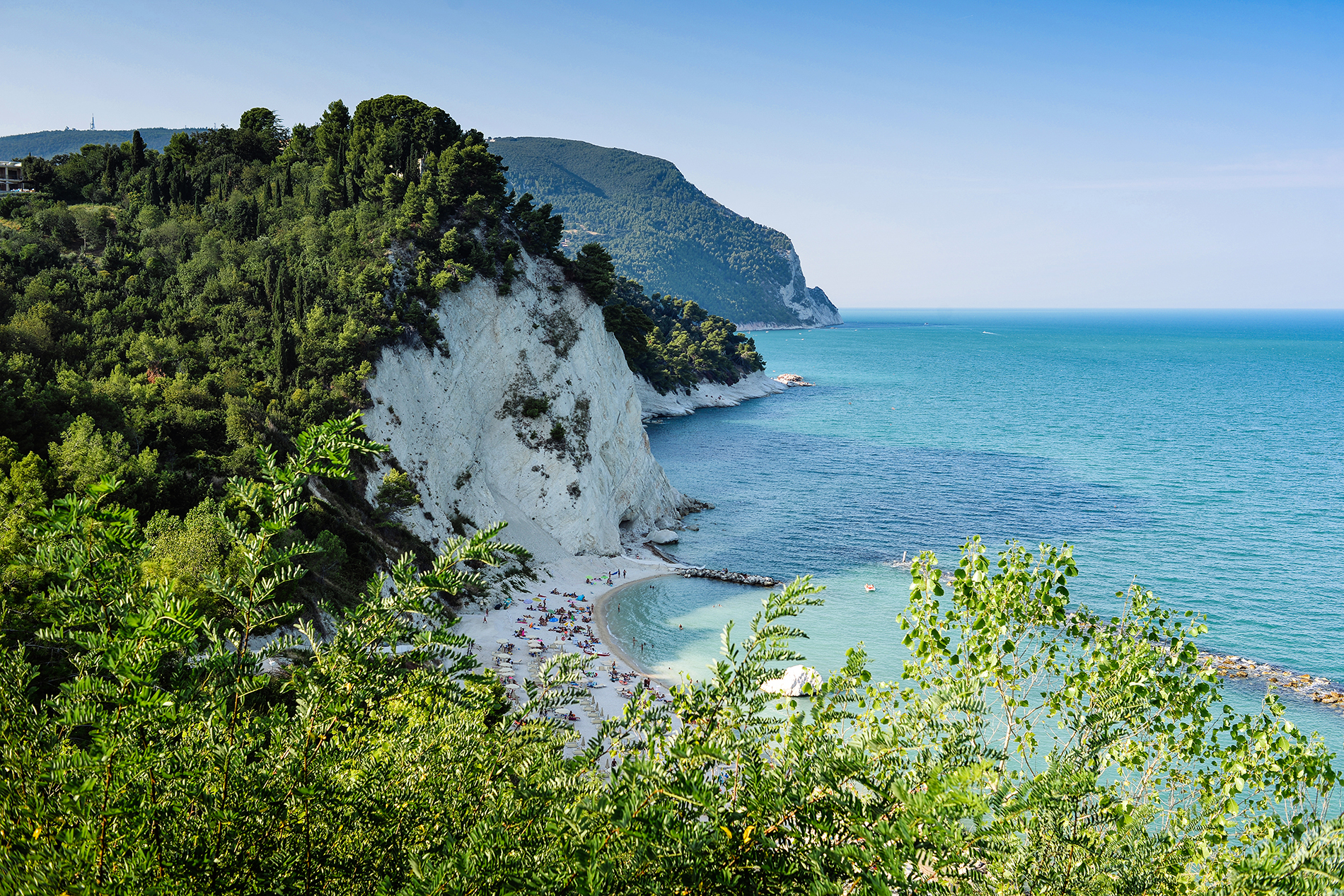Discover the Hidden Gems of Marche: From the Riviera del Conero to the Medieval Towns of Urbino and Ascoli Piceno
Italy’s Marche region, nestled between Tuscany and the Adriatic coast, is home to a treasure trove of picturesque landscapes, historical sites, and charming towns. From the rugged beauty of the Riviera del Conero to the ancient towns of Urbino and Ascoli Piceno, the region offers a captivating mix of nature and culture.
The Duomo di San Ciriaco in Ancona: A Haven Between Sea and Sky
Overlooking the harbor from Guasco Hill, the Duomo di San Ciriaco stands as a symbol of Ancona, the capital city of Marche. Constructed atop the ruins of an ancient Greek temple, this iconic cathedral dates back to the 12th century.
A remarkable blend of Romanesque, Byzantine, and Lombard architectural styles, the Duomo’s entrance is adorned with carved lions supporting a pink-stone portico, inviting visitors beneath a beautifully painted wooden ceiling from the 15th century. Inside, among a grove of marble pillars, lies a crypt containing remnants of an ancient Christian basilica. From the esplanade, visitors can enjoy a breathtaking view of the Adriatic Sea, as well as the urban landscape below—making this a location full of allure and romance.
The Riviera del Conero: From Untamed Shores to Charming Hamlets
Approximately ten kilometers south of Ancona, the Conero Promontory offers a dramatic shift in coastal scenery. Steep cliffs plunge into pristine waters, surrounding secluded bays like Spiaggia delle Due Sorelle, which can only be reached by boat. In the Bay of Portonovo, a 19th-century tower and the Romanesque Church of Santa Maria stand as testaments to the area’s rich history, beautifully set between the sea and mountains. Perched atop hills like Sirolo, these quaint villages offer stunning ocean vistas and access to hiking trails within the Conero Natural Park.
Monte San Bartolo Nature Park: A Blend of Terrestrial and Marine Beauty
The Monte San Bartolo Nature Park stretches from Gabicce Mare to Pesaro, showcasing a diverse array of landscapes from lush hills to dramatic coastlines. The park features steep cliffs, hidden bays, and charming hamlets, all with views of the Adriatic Sea. Visitors can explore various hiking trails that lead to historical sites, such as the Villa Imperiale in Pesaro—a Renaissance palace once owned by the Sforza family and later the Medicis. Another must-see is the hilltop town of Fiorenzuola di Focara, where visitors can enjoy panoramic ocean views and access the park’s only sandy beach.
Jesi: Where Tradition Meets Innovative Tastes
Encircled by well-preserved medieval walls, Jesi is a city where art, history, and culinary delights seamlessly merge. Known for being the birthplace of Holy Roman Emperor Frederick II, Jesi is filled with charming mansions, Renaissance-era churches, and cultural landmarks. The Teatro Pergolesi, dedicated to the famous composer from Jesi, is a highlight of the city’s vibrant cultural scene. The Palazzo Pianetti houses the Pinacoteca, which displays artwork by Lorenzo Lotto, a master from Venice. Wine enthusiasts will also appreciate the renowned Verdicchio wines produced in the surrounding vineyards, making Jesi a perfect destination for those seeking a blend of historical charm and contemporary pleasures.
Ascoli Piceno: A Medieval Gem Surrounded by Olive Groves
Often referred to as the “Little Siena” due to its wealth of medieval architecture, Ascoli Piceno is one of Marche’s most captivating treasures. Situated on a rock at the foothills of the Sibylline Mountains, the city is surrounded by the waters of the Tronto and Castellano rivers. To explore its beauty, visitors can cross one of the city’s elegant bridges, leading into the Piazza del Popolo. Here, narrow streets are lined with medieval towers and Renaissance palaces. Ascoli Piceno is also famous for its olive all’ascolana, a local dish of fried green olives stuffed with minced meat—reflecting the region’s fertile land and rich culinary tradition.
Urbino: A UNESCO World Heritage Renaissance Masterpiece
Nestled atop two hills, Urbino is a shining example of Renaissance ideals and serves as a UNESCO World Heritage site. Located around 100 kilometers from Perugia, Urbino was once home to Duke Federico da Montefeltro, who crafted a vision based on humanism. This vision is embodied in the grandeur of the Palazzo Ducale, built between 1444 and 1472. Today, the palace houses the Galleria Nazionale delle Marche, which features masterpieces by artists such as Piero della Francesca and Raphael—who was born in Urbino in 1483. To fully experience the beauty of Urbino, visitors should take a scenic walk starting from Piazzale Roma, where they can enjoy panoramic views of the city’s fortifications, cobblestone streets, and pink-hued Renaissance buildings.
Conclusion: Marche’s Timeless Charm
The Marche region is a hidden gem of Italy, offering a blend of natural beauty, rich history, and cultural treasures. From the medieval splendor of Urbino to the scenic landscapes of the Riviera del Conero, Marche provides an authentic Italian experience that captivates travelers seeking both tranquility and adventure.





